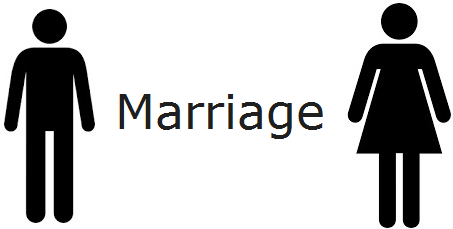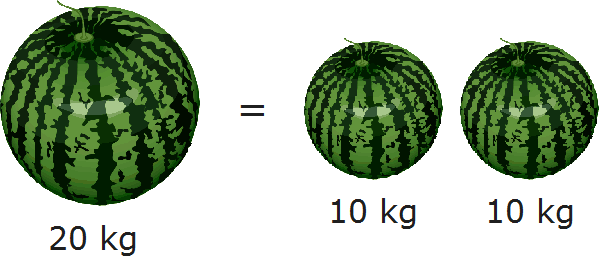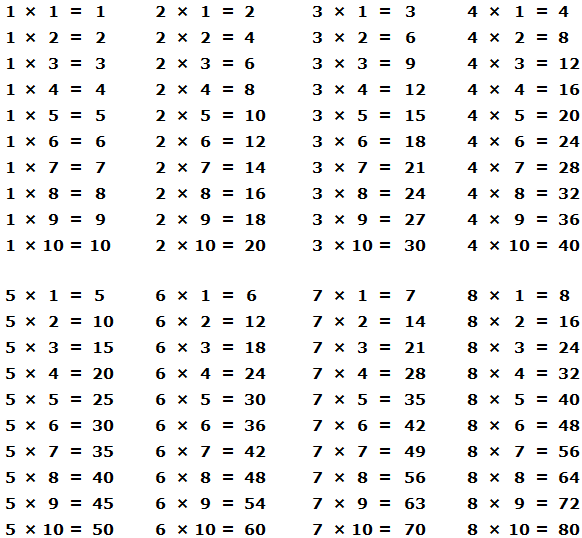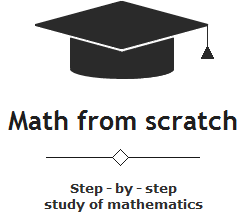The main operations used in mathematics are addition, subtraction, multiplication and division. In addition to these operations, there are also relation operations, such as equal (=), greater than (>), less (<), greater than or equal to (Ōēź), less than or equal to (Ōēż), not equal to (ŌēĀ).
- action actions;
- relationship operatios.
Action Operations:
addition (+)
subtraction (-)
multiplication (├Ś)
division (├Ę).
Relationship operations are:
- equal to ( = )
- more ( > )
- less ( < )
- greater than or equal to ( Ōēź )
- less than or equal to ( Ōēż )
- not equal to ( ŌēĀ ).
Relationship operations
Let’s start with relationship operations. The word ŌĆ£attitudeŌĆØ speaks for itself. Life examples: something has something to do with something. Dad is related to mom. This relationship is called marriage:

There are many examples of relationships. We can say that our beautiful world, which is developing harmoniously, also consists of relationships.
If the five is more than three, then we say that ŌĆ£five is larger with respect to threeŌĆØ and write as 5> 3 (read: five more than three). The acute angle of the sign of the relation should be directed towards the smaller number. In our example, the number 3 was less than the number 5, so the sharp angle of the sign of the relation was directed towards the number 3.
Another example. The number 11 is less than the number 15. This phrase can be written as follows:
11 < 15
In mathematics, relationships can be used to write down laws, formulas, equations, and functions. You can write that one expression is equal to another, or some action is unacceptable in relation to any object, number, law.
For example, the famous phrase «you cannot divide by zero» is written as follows:
![]()
We will not get ahead of events and run forward. Just say that you can use any numbers in this expression instead of a and b. But then they say that b should not be zero.
The equal sign = is between the quantities and indicates that these quantities are equal to each other.
For example, ŌĆ£five equals fiveŌĆØ is written as 5 = 5. It is clear that two fives are equal to each other. Besides prime numbers, more complex expressions can be combined with an equal sign, for example: 9 + x + y = 4 + 5 + x + y.
Another example: if one large watermelon weighs 20 kg, and two small watermelons weigh 10 kg each, then you can put an equal sign between a watermelon 20 kg and two watermelons of 10 kg. This ratio can be read as follows: «one watermelon weighing 20 kilograms is equal to the weight of two watermelons, each of which weighs 10 kg.» After all, 20 kg = 10 kg + 10 kg.

The sign is not equal ŌēĀ is placed between the quantities when they are not equal to each other.
For example, 5 ŌēĀ 7. It is clear that the five is not equal to the seven. Other examples: a dog is not equal to a cat, mandarin is not an orange:
dog ŌēĀ cat
Mandarin ŌēĀ Orange
You can look around you and find many examples of relationships that can be interpreted from a mathematical point of view.
Addition operation
The addition operation is indicated by a plus sign (+) and is used when adding numbers.
The numbers that add up are called terms. The number that results from their addition is called the sum.
For example, add the numbers 3 and 2.
We write 3 + 2 = 5
In this example, 3 is the term, 2 is the second term, 5 is the sum.
In the future, you will have to add quite large numbers. But the addition of these large numbers will ultimately come down to adding small ones.
Therefore, you need to learn how to add small numbers in the range from 0 to 9. For example:
2 + 2 = 4
3 + 4 = 7
7 + 2 = 9
0 + 7 = 7
You can practice writing a few simple examples in notebooks. Believe me, there is nothing shameful in this.
Subtraction operation
The subtraction operation is indicated by a minus sign (-) and is used when another is subtracted from one number.
The number from which another number is subtracted is called decremented. The number that is subtracted from the decremented number is called subtracted. The number that results is called the difference.
For example, subtract 2 from 10.
10 — 2 = 8
In this example, the number 10 is a decrement, the number 2 is a subtractable, and the number 8 is a difference.
Multiplication operation
It is indicated by a multiplication sign (├Ś) and is used when one number is multiplied by another. The word multiplication speaks for itself — a certain number increases a certain number of times, that is, it multiplies.
For example, a 4 ├Ś 3 entry means that the quadruple will be tripled during the multiplication operation.
The number that is increased is called multiplier. A number that shows how many times you need to increase the multiplier is called a factor. The number that results is called the product.
For example, multiply the number 4 by 3.
4 ├Ś 3 = 12
In this example, 4 is the multiplicative, 3 is the multiplier, 12 is the product.
The record 4 ├Ś 3 can be understood as ŌĆ£repeat the number 4 three timesŌĆØ. For example, if we have four candies and we repeat them three times, then twelve candies come out:

In other words, multiplying 4 by 3 can be represented as the sum of three quadruples. Schematically, it looks like this:
![]()
Multiplication can be understood in another way, namely, as taking something a certain number of times. Let’s say candies are in a vase. Take four candies once:
4 conf. ├Ś 1 = 4 conf.
We will have four candies in our hands.
Let’s try to take four candies 2 times:
4 conf ├Ś 2 = 8 conf
We will have eight candies in our hands.
Let’s try to take four candies zero times, that is, never:
4 ├Ś 0 = 0
We wonŌĆÖt have chocolates in our hands, since we never took them. Therefore, multiplying any number by zero gives zero in the answer.
In some books, the multiplier and the multiplier are called by one common word — factors. For example, in a 4 ├Ś 3 record, the multiplier is 4, and the factor is 3, but these two numbers can still be called factors. This will not be a mistake.
In the future, we will multiply fairly large numbers. But multiplying large numbers comes down to multiplying small ones. Therefore, you first need to learn how to multiply small numbers. Fortunately, they are already multiplied and recorded in a special table, which is called the multiplication table. You need to know this table by heart:


Division operation
The division operation is indicated by a division sign (├Ę or ¤Öé and is used when dividing numbers.
The number that is divided is called divisible. A number that indicates how many parts the divisible is divided by is called a divisor. The number that results is called a quotient.
For example, divide the number 10 by 2.
10 : 2 = 5
In this example, the number 10 is divisible, the number 2 is a divisor, and the number 5 is a quotient.
If we have ten candies and divide them into two parts, then each part will have five candies:

So you can understand the meaning of the entry 10: 2 = 5.
